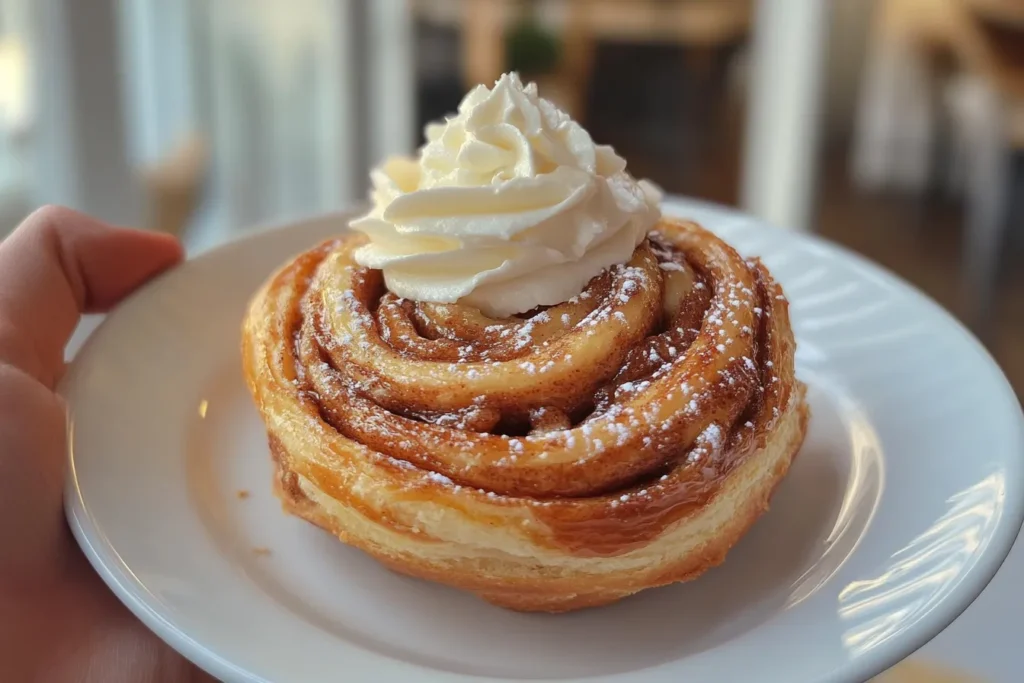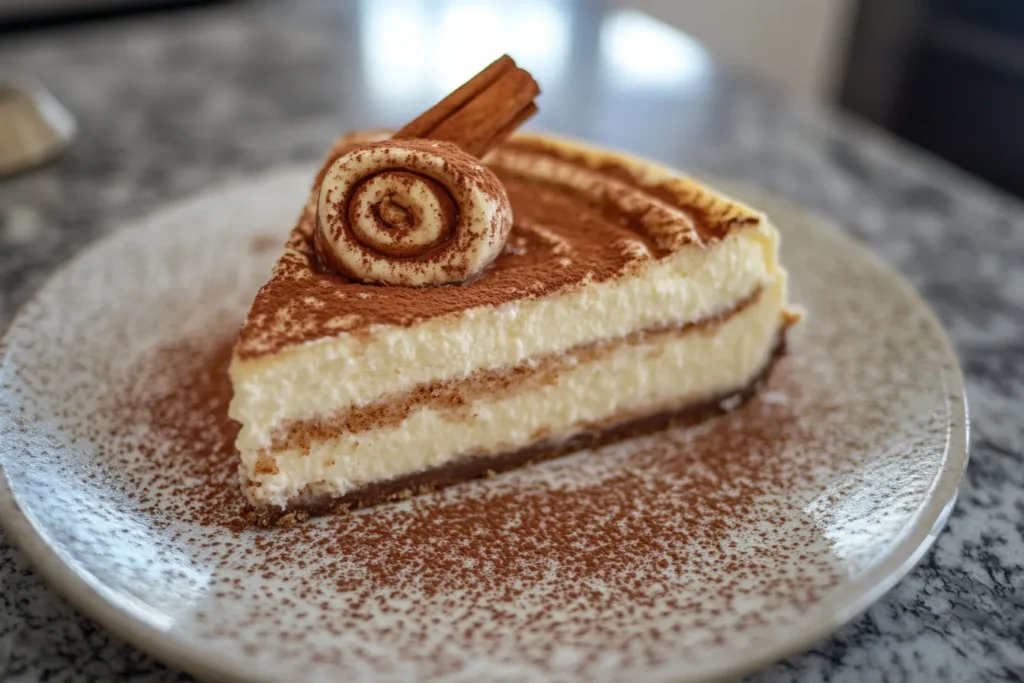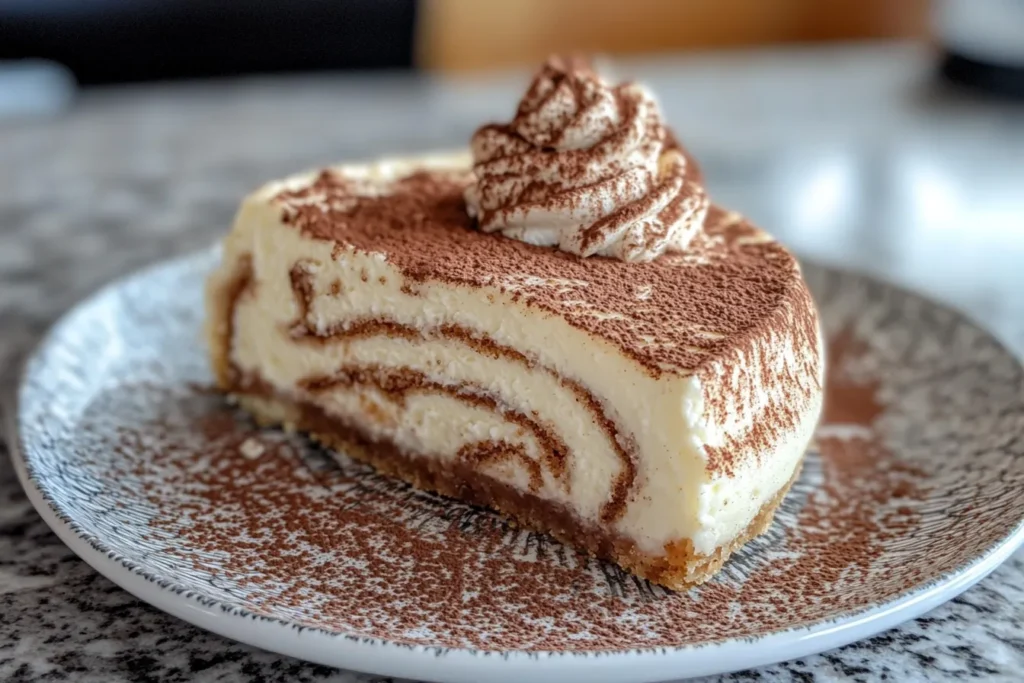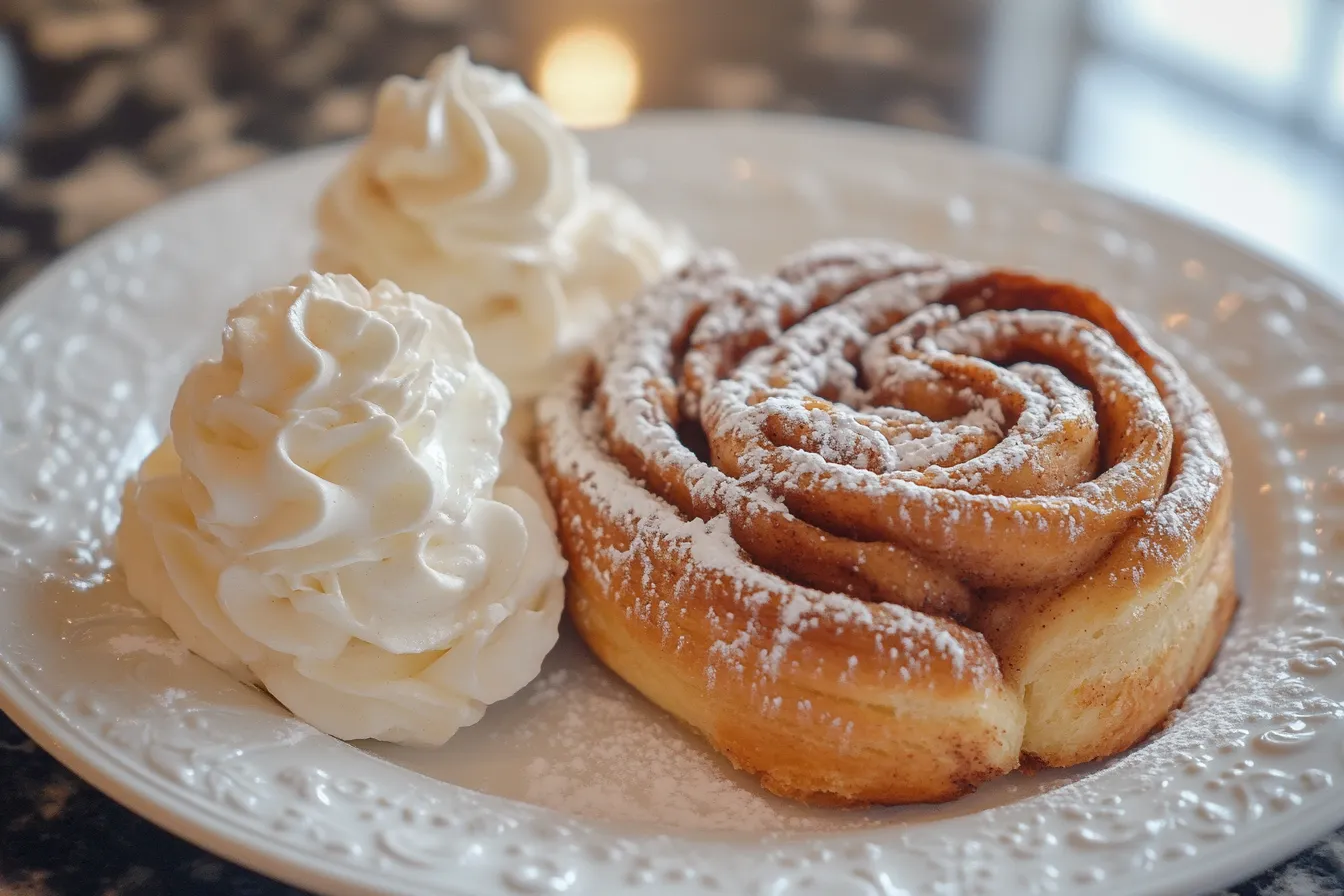Have you ever found yourself staring at a bakery menu, torn between ordering a cinnamon roll or a cinnamon bun? You’re not alone—this little conundrum is more common than you might think! Maybe you’ve even wondered, “Are they really different, or is it just a fancy way of saying the same thing?” The good news is, you’re in the right place to finally settle the score. Whether you’re a die-hard pastry lover or just someone trying to avoid a breakfast blunder, this quick guide will clear up the confusion so you can order with confidence—or maybe even impress your friends with your newfound knowledge. Let’s dig in, because trust me, your taste buds deserve the clarity!
List Of Contents
Overview of Sweet Bread Classics
The world of baked goods is vast, but few items hold as much universal appeal as cinnamon pastries. These treats delight people from morning breakfasts to afternoon snacks with their warm, spiced flavor and soft, indulgent texture. The two most iconic variations are cinnamon rolls and cinnamon buns, both of which feature rich dough and a signature cinnamon-sugar filling.
Their popularity spans continents, with local variations adding a unique flair. Yet, the line between a cinnamon roll and a cinnamon bun often blurs due to their similarities in ingredients and preparation methods. Check out more recipes here.
The Cultural Significance of Cinnamon-Based Pastrie
Cinnamon-based pastries hold a special place in culinary traditions. Historically, people highly prized cinnamon, reserving it for the wealthy and special occasions. Its introduction to baked goods transformed it into a symbol of indulgence and celebration.
Today, cinnamon pastries are staples in bakeries, coffee shops, and home kitchens alike. They often evoke nostalgia, bringing memories of family gatherings and cozy mornings. From Scandinavian kanelbullar to American sticky buns, these treats bridge cultural divides while offering comfort and joy.
Defining Cinnamon Rolls and Cinnamon Buns
Understanding the nuances between cinnamon rolls and buns requires a closer look at their defining features.
Cinnamon Roll: A Classic Breakfast Treat
- Typically served as a breakfast item, cinnamon rolls are known for their soft, fluffy texture.
- The dough is rolled out, layered with cinnamon sugar, and then coiled into spirals.
- After baking, they’re often finished with a creamy, sweet frosting, usually made of cream cheese or powdered sugar glaze.
Cinnamon Bun: A Slightly Stickier Cousin
- Cinnamon buns are closely related but tend to be denser and stickier.
- Unlike cinnamon rolls, they are baked with a caramelized topping, often made with butter, sugar, and sometimes nuts.
- This topping creates a gooey, sweet crust that sets cinnamon buns apart in terms of flavor and texture.
Why the Confusion Between the Two?

The overlap in ingredients and techniques contributes to the frequent mix-up between these two pastries. Both start with yeast-based dough and rely heavily on cinnamon sugar for flavor. Additionally:
- Shape: Both are typically spiral-shaped, making them visually similar.
- Serving Style: Both are often served warm and enjoyed as breakfast or dessert.
- Global Influence: Variations in recipes and presentation across countries add to the confusion.
Despite these similarities, the finishing touches—frosting for rolls versus caramel glaze for buns—are the clearest markers of distinction. Check out more recipes here.
Popularity of Cinnamon Pastries Worldwide
Many cultures cherish cinnamon pastries for their delightful flavor and comforting appeal. In the United States, they are a breakfast staple, often enjoyed with coffee.Swedes celebrate kanelbullar on “Cinnamon Bun Day” (Kanelbullens Dag) every October 4th, emphasizing their national significance. Meanwhile, regions like Canada and Germany put their own spin on these pastries with local ingredients and flavors.
The global love for cinnamon-based desserts has even inspired creative twists, such as cinnamon roll waffles and sticky bun bread pudding.
A Brief History of Cinnamon-Based Desserts
How Cinnamon Became a Star Ingredient
The journey of cinnamon as a key ingredient in desserts dates back centuries. Originating from Sri Lanka and neighboring regions, cinnamon was a luxury spice in ancient trade routes. By the 16th century, it became a favorite addition to European baked goods, especially in countries like Sweden and Germany.
With its unique aroma and versatility, cinnamon quickly gained fame as a flavor enhancer for breads and pastries. Today, its use in cinnamon rolls and buns represents both culinary tradition and modern innovation. Check out more recipes here.
Key Ingredients in Cinnamon Rolls and Buns
To truly appreciate the art of crafting cinnamon rolls and cinnamon buns, understanding their ingredients is crucial. While both pastries share a similar foundation, subtle differences in composition and preparation methods result in their distinctive textures and flavors.
Dough Composition and Preparation Techniques
Yeast-Risen Dough: A Common Base
The backbone of both cinnamon rolls and buns is a soft, yeast-risen dough. Yeast is essential for achieving their light, airy texture. Here’s a breakdown of the primary components:
- Flour: Usually all-purpose or bread flour for structure.
- Yeast: Activates the dough, creating fluffiness.
- Milk: Adds richness and enhances softness.
- Butter: Makes the dough tender and flavorful.
- Sugar: Sweetens the dough subtly, complementing the filling.
- Eggs: Provide structure and moisture.
Bakers knead the dough until smooth, let it rest to rise, and roll it out to form a flat sheet. This step is critical for creating the layers that define these pastries.
Cinnamon Sugar Filling: Core to Both Variants
- Cinnamon: The star ingredient, offering warmth and spice.
- Brown Sugar: Adds sweetness and a slight molasses-like depth.
- Butter: Creates a spreadable base that holds the filling in place.
- Optional Additions: Ingredients like raisins, nuts, or chocolate chips add texture and flavor diversity.
Bakers generously spread the filling over the dough before rolling it to ensure every bite bursts with flavor. Check out more recipes here.
Differences in Baking Techniques

Cinnamon Rolls: Baking with Fluffy Texture in Mind
Bakers prepare cinnamon rolls to prioritize lightness and ensure even cooking:
- Bakers arrange the spirals on a baking sheet or dish with space between them to allow expansion during baking.
- The oven’s heat caramelizes the cinnamon-sugar filling slightly, creating a warm, gooey center.
The final step often involves topping the rolls with a cream cheese frosting or glaze for added sweetness. Check out more recipes here.
Cinnamon Buns: The Role of Sticky Toppings
Cinnamon buns, on the other hand, lean towards a denser texture with a sticky, caramelized topping:
- Before baking, a caramel glaze is spread on the bottom of the baking dish. The buns are placed on top, allowing the glaze to seep into them as they bake.
- Once removed from the oven, the buns are inverted onto a serving plate, revealing their sticky, glistening surface.
This method creates their signature gooey, buttery exterior that distinguishes them from cinnamon rolls.
Presentation and Finishing Touches
Cinnamon Rolls: Often Frosted with Cream Cheese Icing
The finishing touch for a cinnamon roll is often its frosting. Cream cheese icing is the most popular choice, offering a tangy contrast to the sweet filling. Bakers can also use a powdered sugar glaze or vanilla drizzle as an alternative topping.
This layer of sweetness enhances the soft, fluffy texture of the roll, making it an irresistible treat.
Cinnamon Buns: Glazed with a Caramel-Like Sauce
For cinnamon buns, the caramel glaze is both a preparation and presentation element. Often made with butter, brown sugar, and sometimes honey or maple syrup, this topping defines the bun’s decadent appeal. Some variations include pecans or walnuts, adding a nutty crunch.
The buns are often served inverted, showcasing their sticky, glossy topping as the focal point.
Shape and Layering: Visual Clues to Differentiate
While both pastries feature a spiral shape, cinnamon rolls often have a more uniform appearance. The layers are distinct and symmetrical, emphasizing their soft, fluffy texture.
Cinnamon buns, with their caramel glaze and slightly denser build, appear more rustic. Their sticky topping often seeps into the sides, creating an enticingly messy look.
Regional Interpretations of Cinnamon Pastries
Cinnamon rolls and buns have a rich cultural tapestry, with regional variations that add depth and diversity to these beloved pastries. Each locale infuses its version with unique flavors, techniques, and traditions, offering new ways to savor these cinnamon-infused delights.
Swedish Kanelbullar vs. American Cinnamon Rolls
Swedish Kanelbullar: The Original Cinnamon Roll
The Swedish kanelbullar is considered the ancestor of modern cinnamon rolls. Here’s what sets it apart:
- Dough Texture: Kanelbullar dough is less sweet and denser than its American counterpart.
- Flavor Profile: Often includes cardamom, a spice that adds a subtle, aromatic depth.
- Presentation: Shaped into knots or spirals and sprinkled with pearl sugar instead of frosting.
Kanelbullar is a cultural symbol in Sweden, enjoyed during fika (a coffee break) and celebrated annually on Kanelbullens Dag.
American Cinnamon Rolls: A Sweet Evolution
In contrast, American cinnamon rolls are indulgent and dessert-like:
- Dough Texture: Fluffier and sweeter than kanelbullar.
- Frosting: Often topped with cream cheese icing, which adds richness.
- Serving Style: Typically larger in size and served warm for a gooey center.
American cinnamon rolls epitomize comfort food, often paired with coffee for a decadent breakfast or snack.
Sticky Buns: A Close Relative of Cinnamon Buns
Sticky buns are often confused with cinnamon buns due to their shared ingredients and caramelized topping. However, they have a distinct identity:
- Caramel Topping: Sticky buns feature a generous layer of caramel and often include pecans or other nuts for added crunch.
- Baking Method: The topping is placed at the bottom of the pan, and the buns are flipped after baking, revealing their glossy, nutty surface.
- Texture: Slightly denser than cinnamon buns due to the addition of sticky caramel.
Sticky buns are a staple in the Pennsylvania Dutch tradition and have become popular in bakeries across North America.
Cultural Variations Across Europe and the Americas
Cinnamon pastries take on unique forms depending on regional tastes and traditions:
- Germany: Zimtschnecken (cinnamon snails) are similar to cinnamon rolls but often include raisins or marzipan.
- Denmark: Kanelsnegle (cinnamon snails) feature flaky, buttery dough, blending cinnamon rolls with Danish pastry techniques.
- Canada: Cinnamon buns are often enriched with maple syrup, highlighting the country’s iconic ingredient.
- Latin America: Variations incorporate local spices like anise or dulce de leche for a sweeter, creamier twist.
Each of these versions reflects the adaptability of cinnamon pastries to different culinary traditions.
Specialty Ingredients and Variants

Adding Nuts, Raisins, or Chocolate Chips
Both cinnamon rolls and buns can be customized with a variety of mix-ins:
- Nuts: Pecans and walnuts are common in sticky buns, adding a satisfying crunch.
- Raisins: A classic addition that provides natural sweetness.
- Chocolate Chips: A modern twist for those with a penchant for extra indulgence.
These additions enhance texture and flavor, making each bite unique.
Incorporating Local Spices or Ingredients
Regional adaptations often include locally sourced ingredients or spices. For example:
- India: Variants may include cardamom, saffron, or jaggery for a richer flavor profile.
- Middle East: Cinnamon pastries can feature rose water, pistachios, or dates for a unique twist.
- Caribbean: Additions like nutmeg or allspice reflect the region’s love for bold, aromatic spices.
How to Serve and Enjoy
Pairing with Coffee, Tea, or Milk
The warm, spiced flavor of cinnamon pastries pairs perfectly with beverages like:
- Coffee: Balances the sweetness of cinnamon rolls with its robust bitterness.
- Tea: Herbal or chai teas complement the spice profile of cinnamon buns.
- Milk: A classic choice for children and those seeking a comforting combination.
Ideal Occasions for Serving Cinnamon Rolls or Buns
Cinnamon pastries are versatile enough for any occasion:
- Breakfast or Brunch: A popular choice for morning gatherings.
- Holidays: Perfect for festive meals or as a homemade gift.
- Desserts: A warm cinnamon roll with ice cream is an indulgent treat.
The Debate: Which Is Better for Breakfast?
While both cinnamon rolls and buns are breakfast staples, preferences often come down to texture and sweetness. Cinnamon rolls are favored for their fluffy, frosted appeal, while cinnamon buns cater to those who enjoy caramelized, nutty flavors.
Where to Find the Best Cinnamon Rolls and Buns
Famous Bakeries and Chains Around the World
For those seeking the ultimate cinnamon pastry experience, here are some renowned locations:
- Cinnabon (Global): Famous for its iconic cinnamon rolls and rich frosting.
- Fabrique Bakery (Sweden): A must-visit for authentic kanelbullar.
- Sticky Fingers Bakery (USA): Known for its creative sticky bun variations.
- Knaus Berry Farm (Florida, USA): A hidden gem offering some of the best cinnamon rolls in the country.
These establishments showcase the artistry and passion behind crafting the perfect cinnamon pastry.
FAQs
1. What is the main difference between cinnamon rolls and cinnamon buns?
The primary difference lies in the topping. Cinnamon rolls are often frosted with cream cheese icing or glaze, while cinnamon buns are baked with a caramel-like glaze that creates a sticky, gooey exterior.
2. Are cinnamon buns and sticky buns the same?
Not exactly. While both have a sticky caramel topping, sticky buns often include nuts like pecans or walnuts and are denser compared to cinnamon buns.
3. Can cinnamon rolls and buns be made without yeast?
Yes, there are yeast-free recipes that use baking powder or baking soda as leavening agents. These versions are quicker to prepare but may lack the airy texture of traditional yeast-risen dough.
4. What’s the best way to store cinnamon rolls and buns?
- To store them short-term, place them in a sealed container at room temperature, where they will stay fresh for about two days.
- For long-term storage: Wrap tightly and freeze for up to 3 months. Reheat before serving.
5. Can I make gluten-free cinnamon rolls or buns?
Yes! Gluten-free flour blends can be used to make these pastries. Ensure the blend contains xanthan gum or another binding agent for structure.
6. What are the healthiest substitutions for traditional cinnamon rolls or buns?
- Replace white flour with whole wheat or almond flour.
- To store them short-term, place them in a sealed container at room temperature, where they will stay fresh for about two days.
- Swap butter for coconut oil or avocado oil in the dough.
7. Why do my cinnamon rolls turn out dense instead of fluffy?
This often happens when:
- The dough wasn’t kneaded enough to develop gluten.
- The yeast was inactive or expired.
- The dough didn’t proof long enough to rise properly.
8. How do I keep the filling from leaking out while baking
To prevent leaking:
- Spread softened butter evenly before adding the cinnamon sugar mixture.
- Roll the dough tightly, but not so tight that it stretches or tears.
9. What’s the origin of cinnamon rolls and buns?
Cinnamon pastries have roots in Sweden, where kanelbullar originated. The American versions evolved from European recipes, becoming sweeter and larger over time.
10. Can I customize cinnamon rolls and buns with different flavors?
Absolutely! Some popular customizations include:
- Adding chocolate chips, raisins, or nuts to the filling.
- Incorporating spices like nutmeg, allspice, or cardamom.
- Using fruit-based glazes, such as apple or orange.
